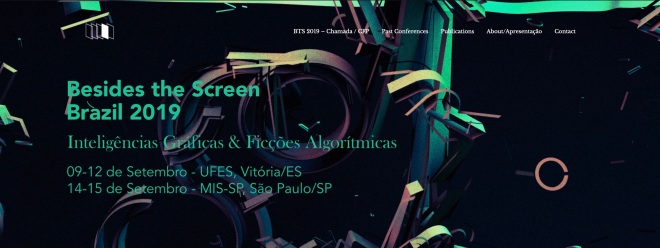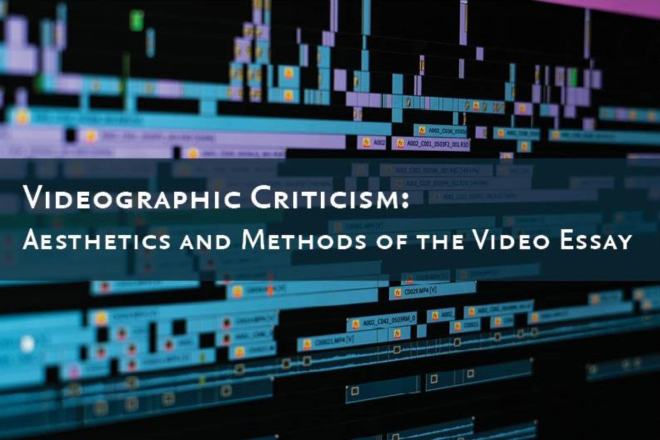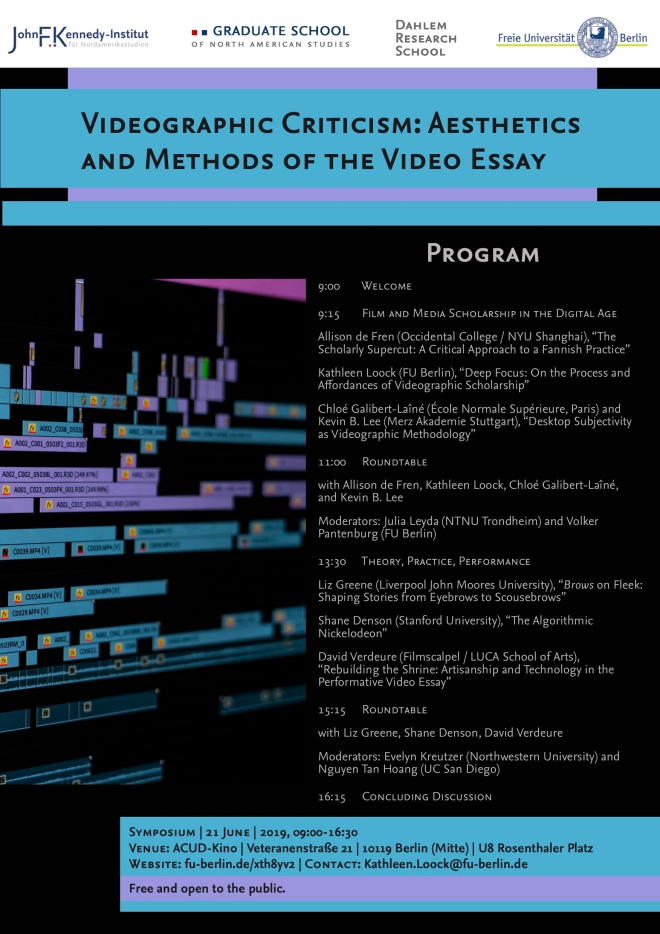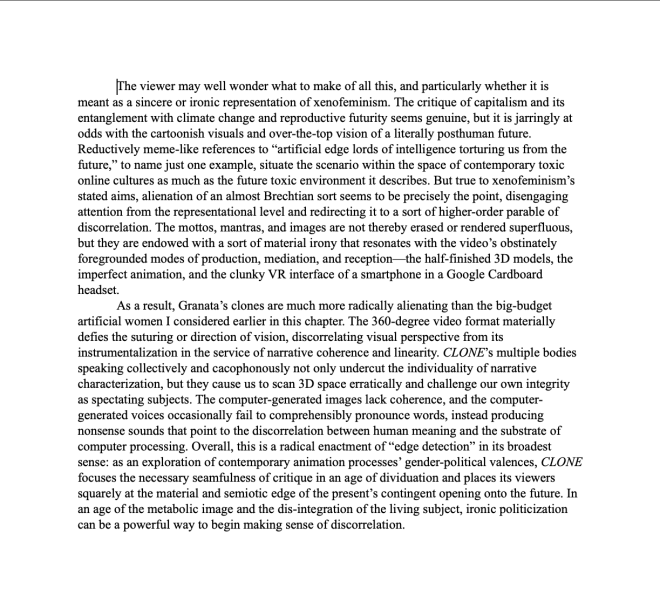Here is the complete video of the Digital Aesthetics Workshop event from September 29, 2020: Vivian Sobchack in conversation with Scott Bukatman and myself. This was a lively and far-ranging discussion, which we were honored to host. Please enjoy!
Category: Video
The Algorithmic Nickelodeon featured in Sight & Sound’s Best Video Essays of 2019
The Algorithmic Nickelodeon from Shane Denson on Vimeo.
Several weeks ago, Sight & Sound Magazine’s “Best Video Essays of 2019” came out, featuring 134 videos nominated by 39 contributors — including my “Algorithmic Nickelodeon” piece, picked by Jiří Anger from Charles University in Prague. He writes:
Despite its formal shortcomings, this must be one of the most thought-provoking videographic works I have seen. Denson’s theoretical manifesto imagines a form of audiovisual criticism that would not be merely expressive but transformative, reinventing our notion of subject-object relations. For this to happen, deformations of the image/object and displacements of the analyst/subject must take place simultaneously. Creative thinking joins forces with EEG headsets and editing programmes to create a media-theoretical ‘perpetuum mobile’, designed for constant questioning of what cinema means in the age of algorithms.
I am honored to have my work featured alongside many fascinating videos, many of which were made by friends and colleagues of mine (including especially noteworthy pieces by Chloé Galibert-Laîné, Kathleen Loock, Jason Mittell, Tracy Cox-Stanton, as well as Allison de Fren’s piece “Mad Science/Mad Love and the Female Body in Pieces,” which I commissioned for the Videographic Frankenstein exhibition at Stanford and published last year in Hyperrhiz).
By the way, I agree completely with Anger’s assessments of my video’s “formal shortcomings,” which stand out all the more against the background of all the excellent and polished work featured in the poll. In fact, my video was conceived and produced as a very rough proof-of-concept for a symposium organized by Kathleen Loock in Berlin last year (where I had hoped to do a live demo of the setup but was unable to due to technical limitations in the venue). A more polished video for the project is currently being planned, but in the meantime I’m quite happy with Anger’s assessment of it as “one of the most thought-provoking videographic works”!
Amalgamate: An Exhibition of Video Works

I am happy to announce Amalgamate, an exhibition of videos made by students in my course on “The Video Essay” (Fall 2019). Works range from analytical to experimental, with activist impulses and cinephilic sensitivities sprinkled throughout. The show runs from January 10-31, 2020 in the Gunn Foyer, McMurtry Building, at Stanford.
Discorrelation and the Post-Perceptual Image (Bogotá, video en español)
Video (in Spanish) of my talk, “Discorrelation and Post-Perceptual Image,” from September 12, 2019 at the Universidad Nacional de Colombia in Bogotá is now online.
Minutes before the talk, I was whisked away to give two separate interviews — one for an article that is now online, and one for a local television station (!), which I have not yet seen…
The Algorithmic Nickelodeon at Besides the Screen Festival (Vitoria, Brazil, September 9-12, 2019)

I am happy to report that my deformative, EEG-driven interactive video project, The Algorithmic Nickelodeon, which was screened last month at the ACUD-Kino in Berlin, has been selected for screening at the Besides the Screen Festival taking place in Vitória and São Paulo, Brazil this September. My understanding is that it will be among the works shown in Vitória from September 9-12.
Images of Discorrelation, MECS Lecture July 3, 2019 (Video)
On July 3, 2019, I delivered a talk related to my forthcoming book, Discorrelated Images, at Leuphana Universität’s Institute of Advanced Study on Media Cultures of Computer Simulation (MECS), during my fellowship in Lüneburg. The video is now online, and can be viewed here (or the direct link to YouTube).
Thanks to Florian Hoof for the kind invitation, and for everyone at MECS and the Center for Digital Cultures for hosting me this summer!
Videographic Criticism: Roundtable Videos

Recently, I posted my my video, “The Algorithmic Nickelodeon,” which I presented on June 21 at the ACUD-Kino in Berlin, in the context of a symposium on “Videographic Criticism: Aesthetics and Methods of the Video Essay” organized by Kathleen Loock.
Now the videos of the two roundtable discussions with Allison de Fren, Kathleen Loock, Chloé Galibert-Laîné, and Kevin B. Lee (moderated by Julia Leyda), and with Liz Greene, David Verdeure, and myself (and moderated by Evelyn Kreutzer) are online, here.
Thanks again to Kathleen Loock for organizing and to the ACUD-Kino for hosting this event!
The Algorithmic Nickelodeon
Yesterday was the first event on my trip to Germany and Switzerland: the symposium Videographic Criticism: Aesthetics and Methods of the Video Essay, organized by Kathleen Loock, and with talks/screenings from her, Allison de Fren, Chloé Galibert-Laîné and Kevin B. Lee, Liz Greene, David Verdeure, and myself.
Above, you will find my video contribution, “The Algorithmic Nickelodeon,” which builds on work started at the Duke S-1: Speculative Sensation Lab during my time there as a postdoc. The video is offered as proof-of-concept for an experimental approach to videographic theory–using video not (only) as a vehicle for theoretical expression but as a more radically transductive medium of media-theoretical exploration and transformation.
“The Algorithmic Nickelodeon” at ACUD-Kino Berlin — Symposium on Videographic Criticism

Next Friday, June 21, 2019, I am excited to present “The Algorithmic Nickelodeon,” a literally mind-bending EEG-powered videographic experiment, in the context of the symposium on “Videographic Criticism: Aesthetics and Methods of the Video Essay.”
The symposium, organized by Kathleen Loock, will take place at the ACUD-Kino in Berlin, and will bring together lots of leading practitioners of videographic scholarship to screen their work and discuss questions of aesthetics, methods, and theory.
The event is free and open to the public, so come by if you’re in the neighborhood!
Resistance is Futile Against Hot Asexuality
Recently, I wondered whether it was time to leave social media and reboot the blog as a space of active thinking and sharing. The jury is still out on whether that is feasible and even desirable. But I would like to use this space to post more than just upcoming talks and publications. In that spirit, I’d like to point out Yvette Granata’s 360-degree video CLONE (2017), which you can see above (but which is better viewed on a smartphone through the YouTube app, and even better with Google Cardboard or similar contraption).
On her website, Granata describes the video thus:
CLONE (HD Video, 2017) is a 360 video essay and a para-sexual design fiction. It narrates a future time after global climate collapse and mass pollution have made sexual reproduction no longer viable. Both sexual reproduction and the networked technology of the 21st century have all melted from the humidity produced by runaway greenhouse gasses. In this speculative future, a Xenofeminist world government has re-purposed the data farms of former tech companies for Mono-auto-sexual cloning clinics — the artificial wombs for the hot asexuality of the future.
I have recently been writing about this remarkable video against the background of big-budget movies about artificial women, including Her (2013), Ex Machina (2014), and Blade Runner 2049 (2017). Those movies, all of which happen to be directed by white men, are interesting meditations on, or parables of, artificial creation in an age of computer-generated imagery. But Granata’s weird video, drawing inspiration from the Xenofeminist Manifesto, goes farther than any of those movies in raising questions about the interface between gender, capital, climate change, and moving-image media.
Here is a brief snippet of what I’ve been writing:

